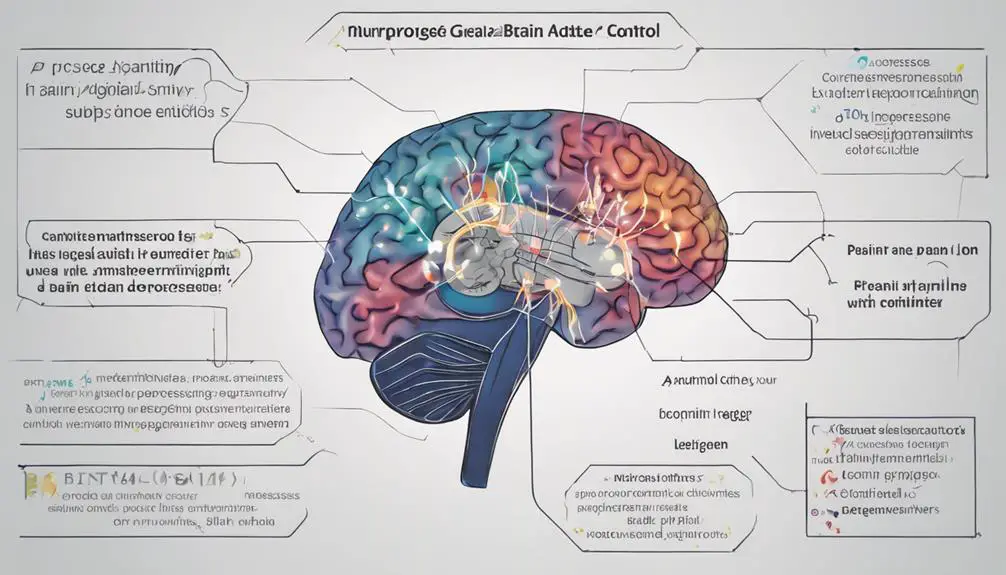Therapeutic Hypnosis Benefits
Mastering Hypnosis for Pain Relief & Healing: 5 Tips
December 9, 2017 - Therapeutic Hypnosis Benefits
Mastering hypnosis for pain relief and healing involves understanding pain perception, building rapport with clients, tailoring personalized scripts, using visualization techniques, and prioritizing self-care. By comprehending pain receptors and neurological pathways, practitioners can modulate pain perception effectively. Building trust through empathy and active listening establishes a strong foundation for therapeutic hypnosis. Crafting personalized scripts based on client needs and communication styles enhances the hypnotic experience. Utilizing visualization techniques and positive affirmations can facilitate relaxation and promote healing. Lastly, engaging in self-care practices and reflection further deepens the healing process. Explore how these strategies can transform pain relief and healing.
Understanding Pain Perception

Understanding the complex mechanisms of pain perception is crucial in the study of hypnosis for pain relief and healing. Pain perception involves a sophisticated interplay of various factors, including pain receptors and neurological pathways. Pain receptors, located throughout the body, are specialized nerve endings that detect painful stimuli and transmit signals to the brain. These receptors play a vital role in the initial detection of pain and are essential for the body's self-preservation.
Neurological pathways are the communication channels through which pain signals travel from the site of injury to the brain. These pathways involve a series of complex interactions between nerve cells, neurotransmitters, and the central nervous system. By understanding how these pathways function, hypnotherapists can work towards modulating or altering the perception of pain in individuals.
Empathy towards individuals experiencing pain is crucial in the practice of hypnosis for pain relief. Through a combination of scientific knowledge and compassionate care, hypnotherapists can effectively assist clients in managing and alleviating their pain.
Building Rapport With Clients
Establishing a strong rapport with clients is a fundamental aspect of successful hypnotherapy practice, fostering trust and collaboration in the therapeutic process. Trust building techniques and effective client communication are essential components in this process.
Hypnotherapists can build trust by demonstrating genuine empathy skills and creating a safe space for clients to open up about their experiences. Active listening, showing understanding, and validating client emotions are key elements in developing strong client connections.
Empathy skills play a crucial role in building rapport with clients. By putting themselves in the client's shoes, hypnotherapists can better understand their needs and concerns. This understanding helps create a supportive environment where clients feel heard and valued.
Additionally, clear and open client communication is vital for establishing trust. Hypnotherapists should communicate clearly, set expectations, and involve clients in the decision-making process to ensure a collaborative therapeutic relationship.
Ultimately, fostering a strong rapport with clients paves the way for more effective hypnotherapy sessions and better outcomes in pain relief and healing.
Tailoring Hypnosis Scripts

Crafting personalized hypnosis scripts is a crucial aspect of tailoring hypnotherapy sessions to meet the individual needs and goals of clients. Customizing suggestions within the script allows for the integration of specific language and imagery that resonate with the client's unique experiences and desired outcomes. By personalizing inductions, the hypnotist can create a deeper sense of connection and engagement, enhancing the overall effectiveness of the session.
When tailoring hypnosis scripts, it is essential to gather detailed information from the client during the initial consultation to understand their preferences, triggers, and areas of focus. This information can then be used to adapt the language, tone, and pacing of the script to align with the client's personality and communication style.
Additionally, incorporating personalized imagery and metaphors based on the client's interests or experiences can deepen the hypnotic experience and increase the effectiveness of the suggestions. By customizing hypnosis scripts in this way, the hypnotist can create a more impactful and transformative healing journey for the client.
Utilizing Visualization Techniques
Utilizing visualization techniques in hypnotherapy sessions can significantly enhance the effectiveness of the healing process by engaging the client's subconscious mind through vivid mental imagery. Guided imagery and relaxation play a crucial role in this process, allowing individuals to tap into their inner resources for healing. By incorporating positive affirmations and visualization, hypnotherapists can guide clients towards a state of deep relaxation where they are more receptive to suggestions for pain relief and overall well-being.
During hypnosis, clients are encouraged to visualize themselves in a peaceful and comfortable setting, often using all their senses to create a detailed mental picture. This technique helps shift focus away from pain or discomfort, promoting a sense of calm and control. Positive affirmations are then introduced to reinforce these images, fostering a mindset geared towards healing and resilience.
Practicing Self-Care and Reflection

Exploring the practice of self-care and reflection can further deepen the therapeutic process in hypnotherapy sessions, fostering personal growth and emotional well-being. Self-reflection allows individuals to explore their thoughts, emotions, and behaviors, enhancing self-awareness and promoting insight into the root causes of pain or distress. By incorporating mindfulness practices into hypnotherapy sessions, clients can cultivate a sense of presence and focus on the present moment, helping them to manage their pain more effectively.
Engaging in self-care activities, such as exercise, healthy eating, adequate rest, and relaxation techniques, can support the healing process and contribute to overall well-being. Encouraging clients to prioritize self-care outside of sessions can empower them to take an active role in their healing journey. Additionally, promoting self-compassion and acceptance can facilitate emotional healing and resilience in the face of pain or trauma.
Incorporating self-care and reflection into hypnotherapy sessions can create a holistic approach to pain relief and healing, addressing the mind-body connection and promoting lasting positive changes in clients' lives.
Frequently Asked Questions
Can Hypnosis Be Used for Chronic Pain Management?
Hypnosis is increasingly recognized in alternative therapies for chronic pain management due to its documented effectiveness. Studies indicate that hypnosis can modulate pain perception by influencing brain activity, offering a promising approach for holistic pain relief.
How Long Does It Take to See Results From Hypnosis?
The effectiveness of hypnosis in producing results varies among individuals. Patient expectations, complexity of the issue, and individual responsiveness influence the results timeline. Typically, noticeable changes may be observed in a few sessions to several weeks.
Is Hypnosis Safe for Everyone, Including Children?
Hypnosis is generally safe for children when conducted by trained professionals, with parental consent and supervision. Studies suggest hypnosis can be effective in managing various issues in children, but individual responses may vary.
Can Hypnosis Help With Psychological Pain and Trauma?
Hypnosis has shown promise in aiding emotional healing and trauma recovery by accessing the subconscious mind to address deep-seated psychological pain. Research suggests its potential as a complementary therapy in facilitating healing and promoting mental well-being.
Are There Any Potential Side Effects of Using Hypnosis for Pain Relief?
When considering hypnosis for pain relief, it's essential to acknowledge potential risks such as false memories or heightened suggestibility. However, with proper guidance and ethical practice, hypnosis has shown effectiveness and safety concerns are minimal, with high success rates reported.
Conclusion
In conclusion, mastering hypnosis for pain relief and healing requires a deep understanding of pain perception. Effective rapport-building with clients is essential, as well as using tailored hypnosis scripts and utilizing visualization techniques. Consistent self-care practices are also crucial for success.
By incorporating these tips into their practice, hypnotherapists can enhance their ability to alleviate pain and promote healing in their clients. Continued study and application of these techniques will further contribute to the effectiveness and success of hypnosis in pain management and overall well-being.
